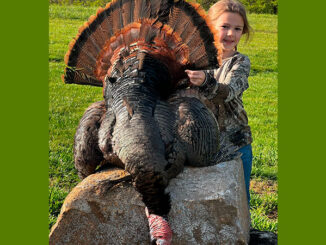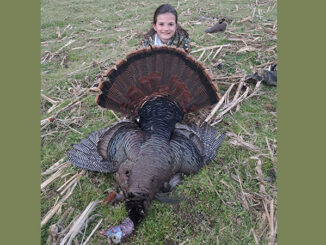
Severe drought hasn’t affected trout fishing
Western North Carolina and South Carolina’s Upstate had the driest summer and fall on record, seasons marked by scores of wildfires, closures of state parks, burning bans and water restrictions.
At last count, at least 20 wildfires had burned approximately 17.5 square miles of forest lands in the Nantahala National Forest, the Great Smoky Mountains National Park, two state parks, and on privately-owned lands in North Carolina.
A wildfire that originated in Table Rock State Park in South Carolina burned approximately 11,000 acres in the Pinnacle Mountain area, one of the largest wildfires on record. Another wildfire burned approximately 10,000 acres in the Jocassee Gorges Wilderness area.
Firefighters from 38 states were working to contain the fires.
The fires and resulting smoky conditions, however, have been harder on fishers than on the fish.
Shane Buckner of Hunter-Banks Outfitters in Asheville, N.C., said that despite low-water conditions, fishing has been very good.
“We had a number of people to cancel because of air-quality conditions, but we had a great October, and people were catching some monster fish,” said Buckner, who said most of his guide trips have been to delayed-harvest waters of the Tuckasegee and the upper Nantahala rivers. “The delayed-harvest streams have been absolute killers.”
One advantage of low-water conditions, Buckner said, is that it’s easier to wade, and the fish are more concentrated.
Roger Lowe, a guide for Brookings Outfitters in Cashiers, N.C., said the number of float trips was down because of low-water conditions, “but business has been good. We’ve had a very good season.”
Lowe said fish are spookier when water is low, and the fishing is more technical, requiring more stealth and longer casts. Fish find refuge in pools and undercut banks. Trout will be more skittish and more difficult to catch, so more patience and consistency are required.
Lowe said his guides have concentrated more on delayed-harvest and high-elevation streams in the Great Smoky Mountains National Park, which have had more rainfall than most of the low-elevation areas.
Despite low-water conditions and hot weather, no fish kills have been reported. Lowe said most fish kills are the result of improper catch-and-release practices.
For successful winter trout fishing, try a variety of flies: dry flies, nymphs and streamers, depending on the weather and stream conditions.
Warm and sunny winter days can produce small but productive hatches of midges and Blue-Winged Olives, which can be found on mountain streams almost any time of the year. Patterns should be small, nothing larger than a No. 20 or 18.
Streamers attract bigger trout, especially lunker browns. As brown trout increase in size, they depend less on insects and more on forage fish for sustenance. Most streamers are designed to simulate typical forage fish found in mountain streams such as dace, darters, chubs, sculpins, shiners and even small trout.
When using streamers, try to imitate the live version of the pattern you are using. A shiner imitation, for example, should simulate the darting patterns of a real shiner. To get this effect, strip the line in about 6-inch increments, pulling it across the current.
For a sculpin pattern, strip the line in shorter pulls, about 4 inches, and let the lure drop to the bottom and sit for a few seconds before stripping it again.
Generally, cast a streamer upstream, let it sink, and begin your retrieve using short jerks alternated with long, steady pulls. Try to get the streamer close to overhung or grassy banks, places where big trout tend to lie. Also, you can let swift water work for you by keeping the streamer in the current and letting it sweep and swirl naturally.
Deep pools can be fished by either letting the streamer sink or twitching the lure across the surface, pausing occasionally to simulate a struggling insect or minnow. If you are fishing near logs, rocks or other obstructions let the streamer wave in the current for a few seconds before moving to another spot.
Streamers can be fished with floating or sinking lines, and weight can be added to get a streamer down into deep pools. A weighted streamer will dip between jerks, giving the lure an erratic motion that suggests an injured minnow, something a big brown will find irresistible.
Presentation is not as critical in streamer fishing as it is in dry-fly fishing. It’s much easier to detect a hit with a streamer than with a nymph. Also, when a large trout hits a streamer, a big hook (usually 1/0 to 10) will hold it. Heavier tippets are needed in case you do snag a big brown.
Recommended patterns are Muddler Minnow, Mickey Finn, Black-Nosed Dace, Hornberg, Spruce Fly, trout imitations, and the old standard, Woolly Booger.





Be the first to comment